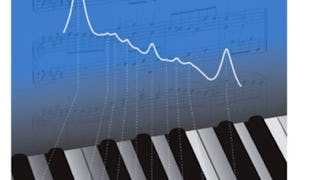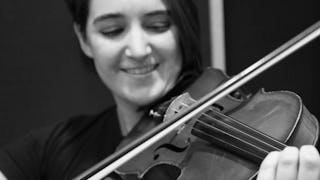This course explores the mystery of music and emotion. Learn how melodies and rhythms can wordlessly “speak,” and why we are willing to listen. See how musical taste forms and learn why it is so personal. We first examine music-induced emotions in the tight bond between auditory and motor systems: the link that makes song and dance such perfect partners. Then we include the reward system to build a triangle of neural connectivity, giving each music lover their own unique “listener profile” of musical enjoyment.


您将学到什么
Name the major lobes and pathways of the brain, and describe how auditory, motor and reward systems work together to perceive melody and rhythm.
Describe links between rhythm, tonality and appetite for novelty that mediate the emotional responses to music.
Define and describe emotional arousal versus valence, music-evoked chills, musical anhedonia, and how pleasure follows predictions.
List seven dimensions of musical pleasure and describe the listener profile.
要了解的详细信息

添加到您的领英档案
October 2025
5 项作业
了解顶级公司的员工如何掌握热门技能

该课程共有4个模块
Welcome to The Neuroscience of Music and Emotion! This module includes what you need to know to get the most out of your Berklee massive online course. We start with the neuroanatomy of our brains to help you get familiar with the regions and structures that give rise to musical thoughts, performance gestures, and feelings. By the end of this lesson, you will be able to identify where pitch and timing cues are processed, describe the difference between the dorsal and ventral auditory pathways, and list the major nuclei of the dopaminergic reward system.
涵盖的内容
7个视频6篇阅读材料1个作业2个讨论话题
In lesson 2 we explore how musical taste forms through passive exposure to music in the environment. We start with rhythm perception: extracting a pulse from accented beats to predict upcoming musical events. Next, we look at tonality perception and how musical training strongly influences the sense of consonance and dissonance. Then we describe how some vocal melodies have a universal, culture-general function, like dancing, healing, and soothing infants. Finally, we see where our own preference for novel vs. familiar music relates to an appetite for aesthetic risk-taking. By the end of this lesson, you will be able to identify how musical tastes develop and what guides an individual to be open to (or not) new musical styles.
涵盖的内容
6个视频3篇阅读材料1个作业1个讨论话题
In lesson 3 we discuss emotional responses to music. We start by defining what an emotion is and discuss why it depends on context. Then we define emotional arousal and valence in terms of musical features. For a better understanding of the range of emotional responses, we look at musical anhedonia (absence of pleasure from music) and its opposite: music-evoked chills. Next, we describe the three stages of emotion generation caused by music and the processes involved. Finally, we look at why most listeners get a good feeling from sad songs. By the end of this lesson, you will have a better understanding of what composers and songwriters can expect if they want their music to generate an emotional response in a listener.
涵盖的内容
6个视频3篇阅读材料1个作业1个讨论话题
In our final lesson we describe the listener profile: the uniqueness of each person’s response to music. We start with differentiating between liking and wanting to learn how a simple hedonic response (“I like that”) differs from a strongly motivated desire to acquire something (“I must hear that again!”). We see how rapidly listeners make judgments of liking vs. disliking some musical styles. Next, we look at bonding to music in adolescence to learn why adults tend to have a “reminiscence bump” for the music of their teenage years. This leads to how our favorite music activates the “default network,” encouraging our brain to mind-wander or daydream during enjoyment. Finally, we illustrate the listening brain in its search for the rewards found in the musical elements of melody, lyrics, rhythm, and timbre, or the aesthetic elements of novelty, authenticity, and realism. We summarize how a listener’s internal conditions and external context ultimately work together to determine music-evoked emotional responding.
涵盖的内容
7个视频3篇阅读材料2个作业1个讨论话题
位教师

提供方
从 Psychology 浏览更多内容
 状态:预览
状态:预览Duke University
 状态:预览
状态:预览The University of Melbourne
 状态:预览
状态:预览The Hong Kong University of Science and Technology
 状态:预览
状态:预览Berklee
人们为什么选择 Coursera 来帮助自己实现职业发展




常见问题
To access the course materials, assignments and to earn a Certificate, you will need to purchase the Certificate experience when you enroll in a course. You can try a Free Trial instead, or apply for Financial Aid. The course may offer 'Full Course, No Certificate' instead. This option lets you see all course materials, submit required assessments, and get a final grade. This also means that you will not be able to purchase a Certificate experience.
When you purchase a Certificate you get access to all course materials, including graded assignments. Upon completing the course, your electronic Certificate will be added to your Accomplishments page - from there, you can print your Certificate or add it to your LinkedIn profile.
Yes. In select learning programs, you can apply for financial aid or a scholarship if you can’t afford the enrollment fee. If fin aid or scholarship is available for your learning program selection, you’ll find a link to apply on the description page.
更多问题
提供助学金,



